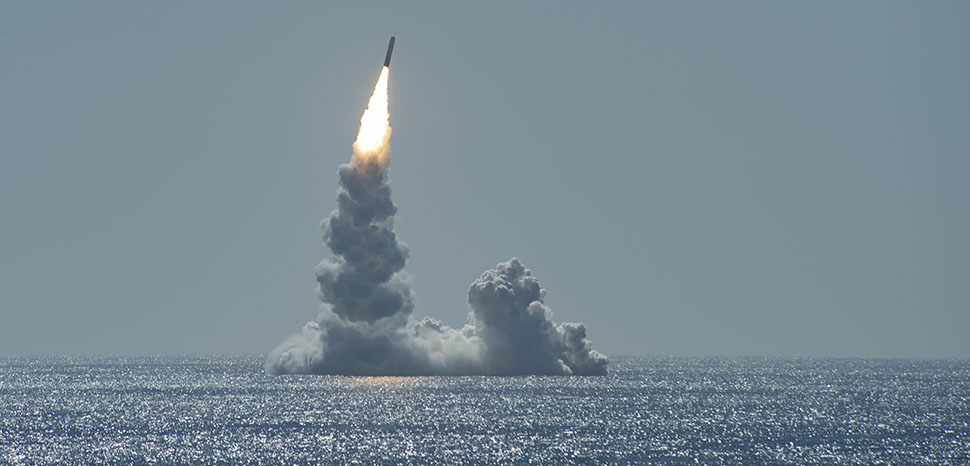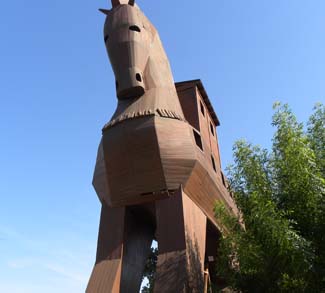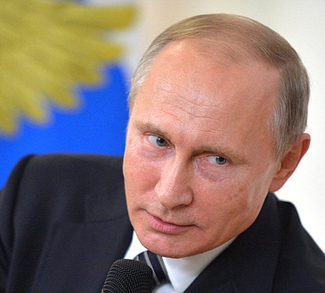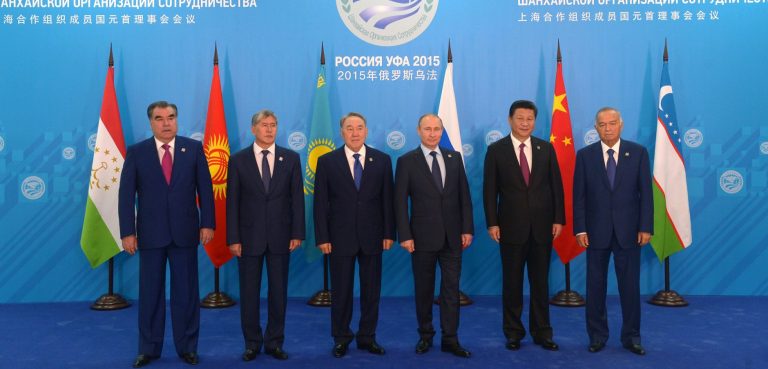The war in Ukraine has prompted much debate among specialists and the general public alike about the effectiveness of the numerous weapon systems used by both sides on the battlefield. Starting from the performance of Soviet-made tanks to the ongoing debate about the impact of F-16 Fighting Falcon fighter jets being supplied to Ukraine, the discussion on weaponry has become mainstream and military terms have become commonplace in the news and social media.
This discussion is a natural by-product of the ongoing war and part of the political debate surrounding it. However, it fails to mention one aspect that, albeit in an indirect and non-obvious manner, is of fundamental importance: the role of nuclear weapons in the war, which arguably overshadows that of all other hardware used on the frontline.
This might seem a contradictory statement, considering that atomic weapons have not been used in the war and likely never will. Yet, it is just the counterintuitive consequence of the nuclear deterrence logic.
The United States and Russia, both involved in the war (even though the former is not a direct fighting party), dispose of the world’s largest nuclear arsenals, which roughly mirror each other. These are meant to ensure nuclear dissuasion, which is based on the concept of mutually assured destruction, or MAD for short: each side knows that, in the event of full-out war, the other is capable of annihilating its industrial-military and civilian-economic complex. Because of that, they avoid going to war with each other. The cost would simply be far too high – as high as the very existence of the respective state.
This same logic also applies to the war in Ukraine, even if neither the US nor the US-led NATO alliance are direct belligerents. The United States and its European allies have supported Ukraine with financing, intelligence, training, and military hardware. But in spite of the widespread sympathy for the Ukrainian cause and of calls for increasing support, they have restrained from taking a direct role in the conflict due to the logic of nuclear deterrence described above. The risk of a direct involvement is simply too great.
This has two consequences. The first is that, short of unforeseeable events triggering an escalation, the United States and NATO will not fight directly against Russian forces. The second is strictly intertwined with the previous. In a counterintuitive manner, considering their non-use, nuclear weapons can be considered the most important piece of hardware in the war, because – as the ultimate guarantee of deterrence – they are what prevents it from spilling over beyond Ukraine and become an intercontinental war with catastrophic consequences.
Here, it is useful to venture into the realm of historical comparisons and hypothetic scenarios. The war in Ukraine began when a great power invaded a country which in turn was supported by another great power and its European allies. Now, this basic scenario is, the differences notwithstanding, the same which resulted in the onset of both world wars. In 1914, the crisis sparked by the assassination of Austria-Hungary’s Archduke Francis Ferdinand prompted the country to invade Serbia, in turn supported by the Russian Empire. When the respective allies mobilized and joined the hostilities, a devastating four-year conflict erupted. In 1939, Nazi Germany’s invasion of Poland prompted the United Kingdom and France to declare war on Hitler’s Reich to protect their ally. Once more, this led to a world war that lasted almost six years.
While ‘what if’ historical scenarios cannot be demonstrated for obvious reasons, it is reasonable to argue that those conflicts would have very likely remained confined to their local dimension if the major powers involved had possessed nuclear weapons, and especially large arsenals as those of today’s Russia and the United States. Applying the reverse logic and supposing that Russia and the US/NATO did not have nuclear warheads at present, then it is probable that the war would have soon escalated into an all-out European war, likely lasting years and causing millions of deaths across the continent.
This is why nuclear weapons, in spite of not being employed, play a fundamental role in the Ukraine war, somehow far more important than that of any other system used by either side: They are what prevents the war from escalating into an even larger, deadlier, and more tragic war.
Among the various types of nuclear weapons, submarine-launched ballistic missiles (SLBMs) are particularly relevant in this sense. Given their greater survivability, which is a consequence of the inherent stealthiness of their launching platforms, SLBMs are an essential second-strike asset, meaning they can virtually ensure the ability to launch an attack capable of destroying the adversary even if the latter strikes first. As such, rather than Leopard 2 tanks or HIMARS rocket artillery, it is the Borei- and Columbia-class ballistic missiles submarines lurking silently somewhere beneath the oceans that have the greater, albeit indirect, impact on the war in Ukraine.
This reflection on the importance of nuclear weaponry and deterrence on the Ukraine war brings to another counterintuitive but important conclusion: Contrarily to what many critics argue, the way the events unfolded so far is a success for NATO, and shows its effectiveness as a military alliance meant to deter an attack on its members.
From a strategic viewpoint, it would have been more logical for Russia to invade the three Baltic states rather than Ukraine. Even when taken together, they are smaller and their militaries have less troops than Ukraine, and thus are in principle easier to occupy. Moreover, their territory is close to St. Petersburg, Russia’s second-largest city and home of an important naval base, and it also separates mainland Russia from the Kaliningrad exclave, where the Russian military has multiple installations including the headquarters of the Baltic Fleet. In spite of this, Russia opted for invading Ukraine instead. The reason is simple: the Baltic republics are NATO members, and therefore protected by the Alliance’s collective security system, which ultimately relies on nuclear deterrence. In this sense, Russia’s decision can be viewed as a success for NATO, as it accomplished its primary mission of preventing an attack on its members – which do not include Ukraine.
All this is not to say that other weapons, either used by Ukraine or Russia, are not significant. They are, as, among other factors, they are what determines the outcome of the war. However, the role of nuclear weapons should not be neglected, for they are what has prevented a tragic war to become a far larger and even more destructive conflict of intercontinental proportions.
The views expressed in this article belong to the authors alone and do not necessarily reflect those of Geopoliticalmonitor.com.




